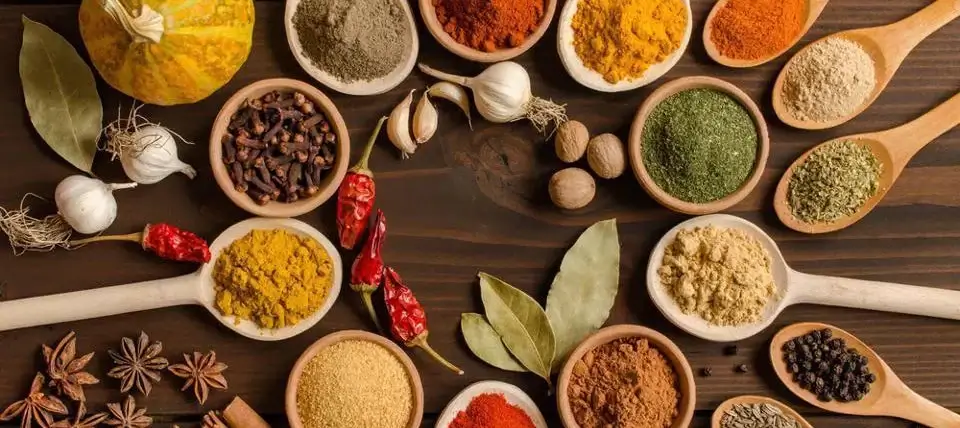Spices are the heart of Indian cuisine, bringing flavour, colour, and aroma to our daily meals. However, the problem of adulterated and fake spices has become a serious concern across the country. From turmeric and chilli powder to black pepper and coriander, many commonly used spices are being mixed with harmful substances to increase profits. This not only cheats consumers but also puts their health at risk. Knowing how to identify fake spices and adulterated products is now an essential skill for every Indian household.
Why Are Spices Adulterated and What Are the Risks?
The high demand and price of spices make them a favourite target for adulteration. Unscrupulous traders often mix in cheap fillers, artificial colours, or even toxic chemicals to enhance appearance and weight. For example, brick powder or artificial dyes may be added to chilli powder, while turmeric might be mixed with chalk powder or industrial yellow colour. Even whole spices like black pepper are sometimes replaced with papaya seeds.
Consuming adulterated spices can lead to a range of health problems. Some adulterants may cause mild stomach upset or allergies, but others can be far more dangerous. Chemicals like lead chromate, sometimes found in fake turmeric, are highly toxic and can cause serious long-term illnesses, including cancer and kidney damage. That is why it is so important to be vigilant about the spices you use at home.
Simple Tests to Detect Adulteration at Home
While some adulteration can only be detected in a laboratory, many common tricks can be caught with simple home tests. These methods use everyday items and your own senses to check the purity of your spices.
One of the easiest tests is the water test. Take a glass of water and add a teaspoon of the spice you want to check. For turmeric powder, if the water turns cloudy or bright yellow, it may contain chalk or artificial colour. Pure turmeric will settle at the bottom, leaving the water mostly clear. Chilli powder mixed with brick dust or dyes will leave a red streak in the water or colour the water unnaturally. Coriander powder should also settle at the bottom, and the water should remain clear, not milky or coloured.
The paper test is another simple method. Place a pinch of spice, such as turmeric or chilli powder, on a clean white paper and press it with your finger. Pure turmeric will leave a bright yellow stain, while adulterated turmeric may leave a dull or patchy mark. Similarly, pure chilli powder should leave a natural red stain, not a bright or artificial-looking one.
For whole spices like black pepper, try the water float test. Drop a few peppercorns in a glass of water. Pure pepper will sink to the bottom, while fake or adulterated peppercorns, often made from papaya seeds or other fillers, will float or remain suspended. Cardamom pods should be plump and green; if they look faded, shrunken, or have an unnatural colour, they may be old or adulterated.
Smell and taste are also reliable indicators. Pure spices have a strong, natural aroma and flavour. If the spice smells weak, musty, or chemical-like, or if the taste is bland, it may not be pure. For example, fresh coriander powder should have a pleasant, earthy aroma, while adulterated powder may smell dusty or stale.
Asafoetida, or hing, is another spice often adulterated. To check its purity, dissolve a pinch in water. Pure hing will dissolve completely, while adulterated hing will leave residue or float on the surface.
Smart Buying Tips to Avoid Fake Spices
While home tests are helpful, prevention is always better than cure. The best way to avoid adulterated spices is to buy from trusted sources. Always choose branded and packaged spices over loose, unpacked varieties. Reputed brands are more likely to follow safety standards and have quality checks in place. Look for FSSAI licence numbers and quality certifications on the packaging. These are signs that the product has been tested and approved by food safety authorities.
Be cautious of spices sold at unusually low prices. If a deal seems too good to be true, it probably is. Cheap spices are more likely to be adulterated with fillers or expired products. When possible, buy from trusted local vendors or reputable online stores that provide information about sourcing and quality control.
Check the packaging carefully. Avoid buying products with damaged, tampered, or faded packaging. Always read the ingredient list and avoid products with added colours, preservatives, or chemicals.
If you have the option, buy whole spices and grind them at home. Whole spices are harder to adulterate than powders, and grinding them yourself ensures freshness and purity.
Why Staying Alert Matters
The danger of adulterated spices is real and growing. Recent government raids and news reports have exposed many popular brands and local sellers involved in selling fake or contaminated spices. The health risks are serious, and the only way to protect your family is to stay alert and informed.
By using simple home tests and making smart buying choices, you can greatly reduce the risk of bringing adulterated spices into your kitchen. Trust your senses, check for certifications, and do not hesitate to test your spices before use. If you suspect a product is fake or harmful, report it to your local food safety authority.
In the end, the safety and health of your family come first. With a little care and awareness, you can continue to enjoy the rich flavours of Indian spices—pure, safe, and full of goodness.


